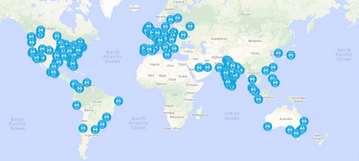Please note that this is not a technical tutorial. This is intended as an introduction to the Universal API Management products.
We would like to thank Carlos Rodriguez Iturria for their contribution to this developer tutorial.
In this tutorial, we will talk about the role of Flex Gateway and where it fits within Universal API Management. We will discuss:
- Why Universal API Management?
- What is Universal API Management?
- Where does Flex Gateway fit?
Why Universal API Management?
MuleSoft is considered a leader in the integration and full lifecycle API Management. Many organizations are using our platform to have the data they need, when they need it, in the appropriate systems; so that they can make critical business decisions. We have provided our methodology to help with speed and agility to create better products and services.
This is all great, but we also have to recognize that there are other technologies or other vendors that also need to be integrated within the same application network. These other APIs are part of companies’ enterprises.

Before Flex Gateway, we already had the ability to proxy into this world of other APIs and provide capabilities within our control plane (Anypoint Platform). But we were still isolating any non-Mule APIs in a different way than we did Mule APIs. This is what we want to change with Universal API Management (UAPIM):

With this, we are providing the ability to discover, manage, secure, and monitor any kind of APIs from one single control plane. We are able to manage all these APIs from the same platform without having to recognize whether they’re Mule or non-Mule APIs.

With UAPIM, we can manage all our APIs regardless of their nature, location, where they are deployed, or what technology they’re using behind the scenes.
Now that we have more context on the problem that UAPIM is solving, let’s now talk about what it actually is.
What is Universal API Management?
There are five aspects to UAPIM:
- Discover/catalog all APIs (with CLI)
- Protect all APIs (with Flex Gateway)
- Manage centrally (with API Manager)
- Enforce standards (with API Governance)
- Create API marketplace experiences (with Experience Hub)
Let’s talk about them briefly to better understand the whole experience.
Discover/catalog all APIs
UAPIM provides a CLI to simplify the way we can discover and catalog any type of API into our platform. With this feature, you can push any Mule or non-Mule API to Anypoint Exchange. However, not all these APIs will be properly protected. That is until we start using Flex Gateway.
Protect all APIs
We need to provide the right security to protect all Mule and non-Mule APIs. We can do this with Anypoint Flex Gateway. This includes routing strategies, security policies, SLA tiers, and more. Not only that, this can be incorporated into any kind of 3rd party system that might already be in place. If no system needs to be included, then we can push this into our existing platform. This takes us to the next point.
Manage centrally
Everything can be managed from one single place, using a single control plane - Anypoint Platform’s API Manager. Regardless of the API, you can now govern everything from API Manager. However, we weren’t able to enforce specific quality or security standards throughout all our APIs. Until API Governance.
Enforce standards
With API Governance, we can now make sure that our microservices are following the required standards from our organization. From design to runtime, we can enforce different policies to make sure all our applications are compliant with industry, security, or company standards.
Create API marketplace experiences
With Experience Hub, we have the ability to consume any API - Mule or non-Mule - and create a digital space. We are able to create these marketplace experiences to showcase our APIs as products, let users consume them, and have the full information about who’s using what and when.
Where does Flex Gateway fit?
We learned that Flex Gateway was created to protect all APIs - Mule and non-Mule. With Flex Gateway, we can secure these APIs with the right level of authentication, authorization, rate-limiting, etc.

For example, we might have some applications based in Java and some in Python. We need to secure and protect all our microservices equally. Not only restrict the access level to the application, but we might also want to have more fine-grained control over the internal communication of these services. With Flex Gateway, we can enforce the security policies we need exactly where we need them - Mule and non-Mule.
Next Steps
In this tutorial, we talked about the role of Flex Gateway and where it fits within Universal API Management. We learned:
- Why Universal API Management?
- What is Universal API Management?
- Where does Flex Gateway fit?
In the next tutorial, we’ll learn more about Anypoint Flex Gateway and what are the different ways it can be installed.
Click on the Next button below to continue to the next tutorial.
Next











